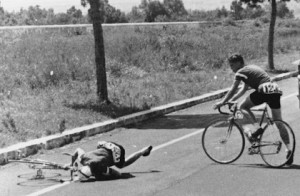The History of Performance-Enhancing Drugs
Just as modern medicine has evolved over the years, so too have performance-enhancing drugs. Although they have only come into the spotlight in recent times, the practice of using drugs to gain an advantage over an opponent is older than Rome. These days, the efforts of professional athletes to cheat has caused irreparable harm to the record books of some major sports, most notably Major League Baseball. So as we debate about whether or not steroid-users should get into the Hall of Fame, or what good the next policy will do regarding illegal substances, we should first look back at how performance-enhancing drugs have come this far.
Ancient Greece and Rome
The beginning of performance-enhancing drugs is almost the same as the beginning of organized sports. In ancient Greece, some of the earliest Olympians used abnormal substances in an attempt to gain a competitive advantage. Their drug of choice would either be plant seeds or extracts of mushrooms. Later in Rome, gladiators were known to have turned to drugs. It’s difficult to blame them, but gladiators would dope for various reasons, from dulling pain to creating a bloodier spectacle for viewers.
The Dangerous History of Performance-Enhancing Drugs
While cheating and gaining an unfair advantage are terrible actions for an athlete to take, the worst aspect of performance-enhancing drugs is that they can cause extreme harm to the user. The first death related to using drugs in sport is recorded in 1886, when Welsh cyclist Andrew Linton died after ingesting trimethyl. For his race from Paris to Bordeaux, Linton took the alcohol-based substance in order to ease pain and gain endurance. During the 1904 Olympics in St. Louis, marathoner Thomas Hicks suffered a near-death incident after taking a mixture of brandy and strychnine. Then, amphetamines caused speed skaters at the Oslo Winter Olympics to become sick in 1952. At the Rome Olympics, amphetamines caused Danish cyclist Knut Jensen to collapse during an event. When he fell, Jensen fractured his skull, causing him to die. In 1967, the Tour De France experienced its first death due to performance-enhancing substances when Britain’s Tommy Simpson died due to amphetamines.
Whether it was a death, the invention of a new substance, a new policy, or some other event in history, there have been plenty of steps that pushed performance-enhancing drugs to where they are now. After amphetamines started production in 1930, male hormones and steroids began being used in sports in the 1950s. In 1976, steroids were banned by the International Olympic Committee before U.S. discus thrower Ben Plucknett tested positive for anabolic steroids. Plucknett became the first athlete to be disqualified by the International Association of Athletic Federations because of drug testing. After the NFL began testing players for steroids in 1987, the MLB instituted its first steroid policy in 2003.
After anti-doping agencies were formed on the international and domestic level, an investigation and raid on BALCO ends with several upper-level employees and CEO Victor Conte being indicted on 42 counts of conspiracy to distribute steroids. Many athletes were connected to BALCO, including Barry Bonds and Marion Jones. After admitting to using steroids, Jones was stripped of her five medals from the Sydney Olympics and was sentenced to six months in prison due to lying to investigators during the BALCO incident.
More recently, athletes Alex Rodriguez, Mark McGwire and Lance Armstrong, among others, admitted to using performance-enhancing drugs. Now, performance-enhancing drugs seem to be evolving even more. Ray Lewis’ connection to deer antler spray as a performance-enhancing drug makes it seem like anything from electronic deer repellent to sunscreen has the potential to give athletes an unfair advantage.
In the centuries since the ancient Greeks discovered the supposed benefits of performance-enhancing drugs, the drive to be the best of the best has not diminished. For now, it appears that the problem of performance-enhancing drug use is far from being resolved. As society advances, new enhancements are discovered that provide athletes with advantages.












